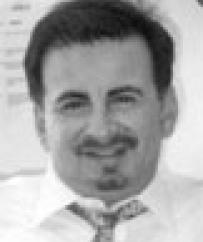TPR readers should be familiar with Metro Planner James Rojas. A frequent contributor to TPR and familiar public face, James Rojas recently shared with TPR his most recent project: interactive modeling of built environments. TPR Editor James Brasuell here highlights the benefits-and a bit of the fun-of Rojas's interactive modeling activity. For more information on how to participate in the modeling activity, contact James Rojas via Facebook.

James Rojas
Local artist, community advocate, and Metro planner James Rojas has found a solution to the lack of public participation in the planning process. For the past few years, Rojas has been touring the region and beyond, bringing along an interactive model, and asking the public to invent a vision for their communities. The results, Rojas says, have been nothing short of transformative: "The most powerful result from the interactive modeling processes is that it changes people from within by giving the capacity to understand the urban planning process."
Rojas is a local commodity-he works for Metro, founded the Latino Urban Forum and Gallery 727, and is a familiar face at planning and transportation events around Los Angeles. In the past few years he has set up his models in locations and communities as varied as MOCA, Santa Monica, Jordan Downs, Fellsmore, and Watts (just to name a few in the Los Angeles basin). But Rojas has also taken the show on the road, visiting and modeling locations as far away as Boston and Rotterdam.
The interactive modeling process is simple and fun. Rojas provides a blank canvas or a bare geographic representation of the area (including features such as terrain and waterways but not buildings or roadways) and then supplies common materials such as shampoo bottles, LEGOs, and wood blocks-a vast collection of brightly colored toys and trinkets-to stand in for the design features of the interactive model. The material used for the creation of the models encourages the playfulness and creative freedom that Rojas hopes to encourage with the exercise.
The key aspect of the exercise is to redefine the act of urban design and the public's engagement with the planning process. Instead of remaining a slow, bureaucratic process that functions in a world far removed from the public eye, an artistic and creative activity brings the practice of designing communities into the experience of anyone willing to take the time to play with a model.
Rojas presents the modeling activity as a community-oriented process, either as a group activity at meetings or events, or as a temporary installation on public thoroughfares such as Union Station or along the Walk of Stars on Hollywood Boulevard.
At the interactive workshops that Rojas hosts at community groups and events, he uses the model as a thought experiment by seeking solutions to everyday design problems. Rojas leads groups through a process by which they 1) discuss criteria for problem solving, 2) seek out materials appropriate for probable solutions, 3) design solutions for the presented problems, and 4) present their design and solutions to the larger group. The process is active, collaborative, and creative, and it works with broad planning visions (such as youth outreach for the City of Pasadena General Plan update) or more specific issues (such as brainstorming ideas for a "biketopia" in Los Angeles).
In the second instance, as exemplified by the Union Station installation, the model is assembled literally as a public intervention, stopping the public in the midst of using the regional transportation system and asking them to reimagine that system. By asking those passing by to interact with the model, the public space takes on new purpose-becoming a multi-use facility that people engage with as they travel through-and the seeds of creativity are planted for the improvement of that very space and the systems it facilitates.
Although Rojas' modeling exercises are not sanctioned in any bureaucratic sense-not in the way that a public hearing pursuant to CEQA is-the participants in the process develop tools and ideas that can be helpful the next time they engage in the official planning process in their communities. And, Rojas believes, the participants in his modeling exercise will be more likely to participate in the planning process because the modeling activity will help them see their communities differently, with an eye toward design and planning choices they might not have considered before.
Community participation in the planning process usually comes as a result of controversy or in the form of NIMBY resistance. To be fair, sometimes the public outcry is warranted. But when was the last time that the public didn't feel disconnected from the planners and politicians making decisions about the built environment they all share? And when was the last time a planner wasn't frustrated by the attempt to communicate the multitude of considerations that go into community planning efforts? Among the benefits of the interactive modeling process is the chance for planners to hear the ideas that are important and useful to the public in the language of the people who inhabit these communities, not the esoteric language of the planning and development process. According to Rojas, "The workshops provide planners with rich information about what the public wants in the built environment."
"Everyone likes to create," says Rojas, not just architects, planners, and politicians. If exercises such as Rojas's modeling activity are exported and expanded-and planners and politicians find new and better ways to tap into the creative instinct of the people they represent-there is no limit to the solutions they can find together.
- Log in to post comments



